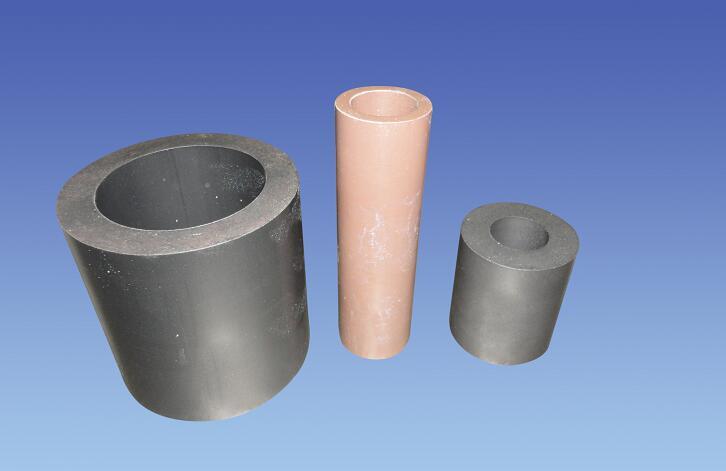PTFE is available in many different Grades as Virgin PTFE, Chemically Modified PTFE, Carbon Filled PTFE, Glass Filed PTFE, Carbon / Coke Filled PTFE, Graphite Filled PTFE, Bronze Filled PTFE, Bronze + Molybdenum Disulphide Filled PTFE, Aluminum Oxide Filled PTFE, Calcium Fluoride Filled PTFE, Stainless Steel Filled PTFE, Mica Filled PTFE, Glass + MoS2 Filled PTFE, MoS2 Filled PTFE, Chemically Modified PTFE etc.

The contact between two sliding surfaces, because of the inevitable friction generated in the contact zone, results in a certain wear whose magnitude depends on load, speed and time of sliding contact. Theoretically, between these parameters and the resulting wear exists a relation proportional to:
R = KPVT
where, expressed in the measuring units of table:R = wear in mmP = specific load in N/mm2 (referring to the surface – Ø x l – in case of bushes, nipples, etc.)V = sliding speed in m/secT = time in hrsK = wear factor in mm3 sec/Nmh.
The value of the factor PV after which the coefficient of wear loses its linear behavior, assuming remarkable values with the system passing from weak to strong wear condition, is known as “PV limit”. This PV limit and the wear factor are, therefore, characteristic parameters of each material. In practice, however, it can be easily perceived, the wear factor and the PV limit of the same filled material can vary also with the nature, the hardness and the surface finish of the other contact “partner” with the presence, or not, of cooling and/or lubricating fluids.
Deformation under load and compressive strength PTFE, like most other plastic materials, has no “elastic zone” where the ratio load/deformation (Young modulus) has a constant value. This ratio load/deformation depends upon the time of application of the load and the ensuing deformations; this phenomenon is known as “creep”, and at the removal of the load, there is only a partial return of the deformation to the original state (“elastic recovery”), so that we are always in the presence of a “permanent deformation”.
Creep, obviously not being a linear function of time, results after just over 24 hrs in deformations which in most cases are not taken into consideration. With increasing temperature, there is a falling off of the deformation under load properties and consequently of the compressive strength which is already at 100°C equal to 1/2 of that at 23°C and at 200°C about 1/10th.
In any case, PTFE and in particular filled PTFE, is one of the plastic materials retaining, at high temperatures, optimum deformation properties under load. To conclude, the elastic recovery in about 50% of the deformations under load, and the permanent deformations are equal to about 50% of the deformations under load.
This applies both to filled and unfilled PTFE. The properties of the first are however decidedly superior. In fact, the deformation under load of the more common types of filled PTFE are about 1/4 of that of the unfilled ones, while the compressive strength is about the double.
Thermal Properties of Filled PTFE
The thermal expansion of filled PTFE is in general inferior to that of unfilled PTFE and always greater in the direction of the moulding than crosswise. The thermal conductivity is superior to that of unfilled PTFE, particularly when using fillers having a high thermal conductivity of their own.
Filled PTFE therefore have better thermal properties than the unfilled ones.
Electrical Properties of Filled PTFE
These properties depend to a large degree upon the nature of the filler. Only PTFE filled with glass fibre possess good dielectric properties, even though different from those of unfilled PTFE. For example, the volume and surface resistivity, the dielectric constant and the dissipation factor vary largely with the variation of the humidity and frequency.
Post time: Aug-04-2018

